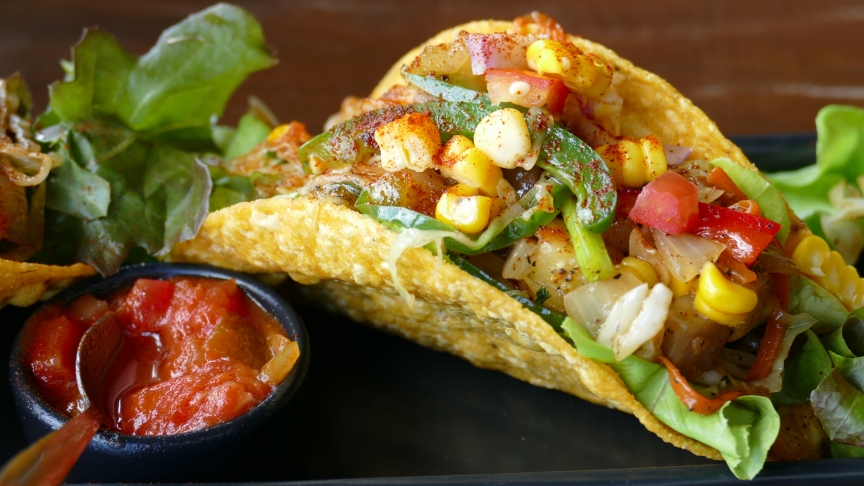All About Onions |
 Onions fit into three categories: short-day, intermediate-day and long-day varieties. Gardeners in plant hardiness Zone 7 and south will succeed best with short-day onion varieties. Zones 5 & 6 will probably be able to grow these varieties, too, if onions are planted in late winter instead of in the fall. Intermediate-day varieties will work for most gardeners in Zones 5 & 6 while long-day varieties will succeed in Zone 6 and colder zones. There is obviously some overlap with varieties that require shorter days being adapted to climates where much longer days occur. The key factor here is whether these varieties have sufficient time to make enough growth before lengthening days signal the bulbing response, and of course, the days have to get long enough to signal the response. Confusing as this may seem, most gardeners will do well with Burpee's 'Giant Red Hamburger', 'Sweet and Early Hybrid' and 'Snow White Hybrid' onion plants. 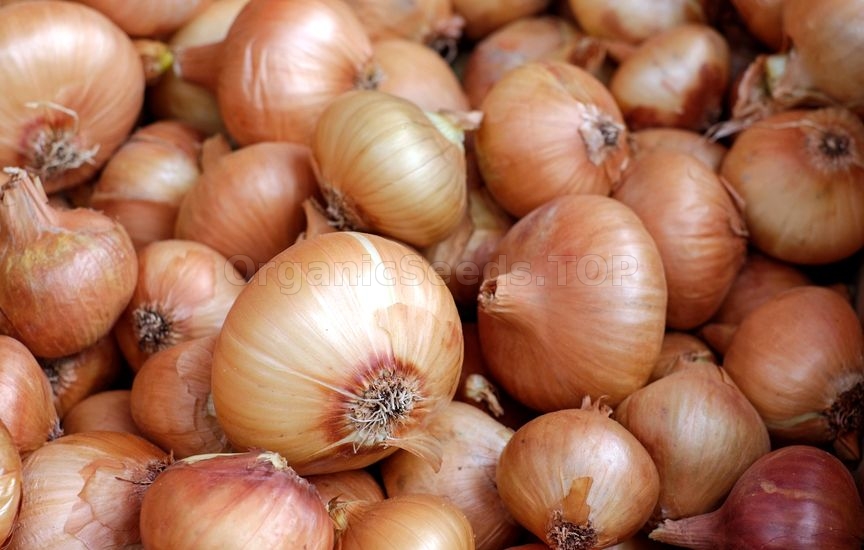 Gardeners from Zone 6 north will do well with the red, white and yellow onion sets and 'Walla Walla Sweet' onion seeds while everyone can grow the 'Evergreen Long White Bunching' onions, 'Early Italian' and 'Extra Select' garlics and 'Dawn Giant' leeks. Shallot sets will work in most areas of the country, but in the lower South look for 'Louisiana Multiplying' shallots. These white clump-forming shallots are readily available at the local feed store in most areas of the South in the fall. Gardeners in Zones 8 and 9 should look for short-day bulbing onions like 'Grano', 'Granex' and the various hybrids, 'Texas SuperSweet' and 'Burgundy'. These onion varieties are best planted from seed in the fall or transplants can be set out in January. Onion and garlic chives also thrive in the lower half of the country during the fall and winter and in most areas during the summer. Onion chives will fizzle out in midsummer in the lower South, but often come back as temperatures cool off in the fall. Garlic chives are almost a weed. Onion Plant History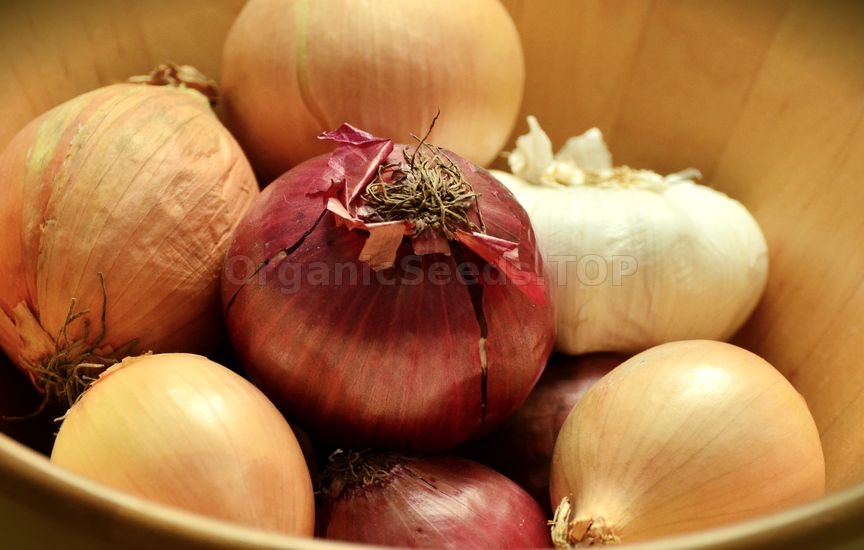 Bulbing onions probably originated in the region of the world now known as Pakistan. The Egyptians were said to have built the pyramids on a diet that included a generous supply of onions. Imagine straining to move stones that weighed tons when you and all of your co-workers had a steady diet of onions - not a pretty picture. Regardless, onions have been an important food item in Egypt since 3200 BC.
Onions came to the New World with the Spaniards and shortly thereafter we discovered how great they were in sour cream and on a hamburger. The rest is history. How To Cultivate Onion Plants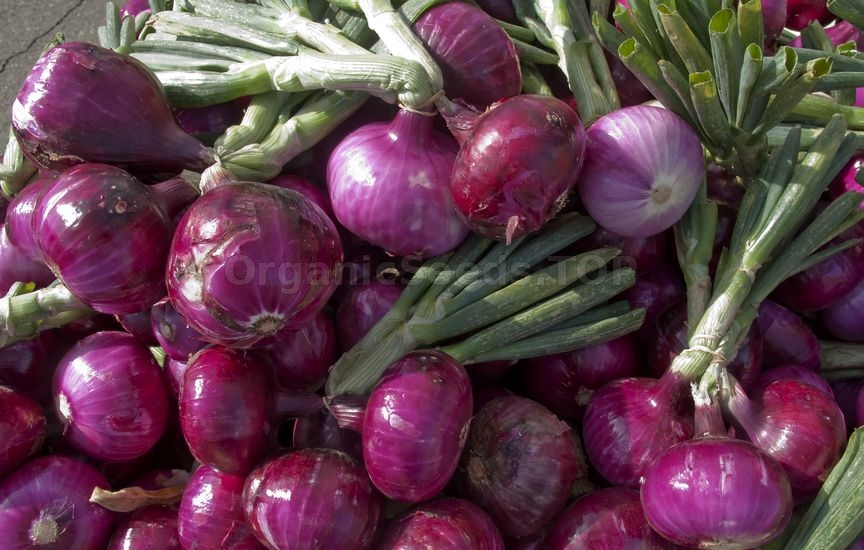 Onions, like most vegetables, thrive in a rich organic soil. Prior to planting, work 2 to 4 inches of compost or well-rotted manure into the soil plus 1 to 2 pounds of a complete fertilizer per 100 square feet. Try to be careful about the fertilizers you use for onions. Onions tend to be more pungent when grown on soils with a high sulfur content. Choose a nitrate-based fertilizer over a sulfate-based fertilizer if you can make that determination.
It's difficult to do this with blended fertilizers, but ammonium nitrate would be better to use than ammonium sulfate for side dressing. The fertilizer bag, even on complete fertilizers, 12-24-12 for example, may indicate the components used to formulate the fertilizer. Onions also have a limited root system so, while you don't want to get fertilizer on the plants when you side-dress, you don't want it in the middle of the row either. Try to space onion seeds 1/2 inch apart and cover them with 1 inch of soil mix. Later thin onions to stand 4 to 6 inches apart. If you're planting onion sets or setting out plants start at this spacing. For scallions (green onions), leeks, garlic sets (cloves) or bunching onion transplants, space them 2 inches apart. Onions need lots of moisture as the bulb initiation process begins, but less when the bulbs are approaching full size. When the tops begin to fall over naturally, it's time to pull the onions up. Bunching onions are harvested as scallions. Plant seeds in the spring and again in the fall. Onion Growing Tips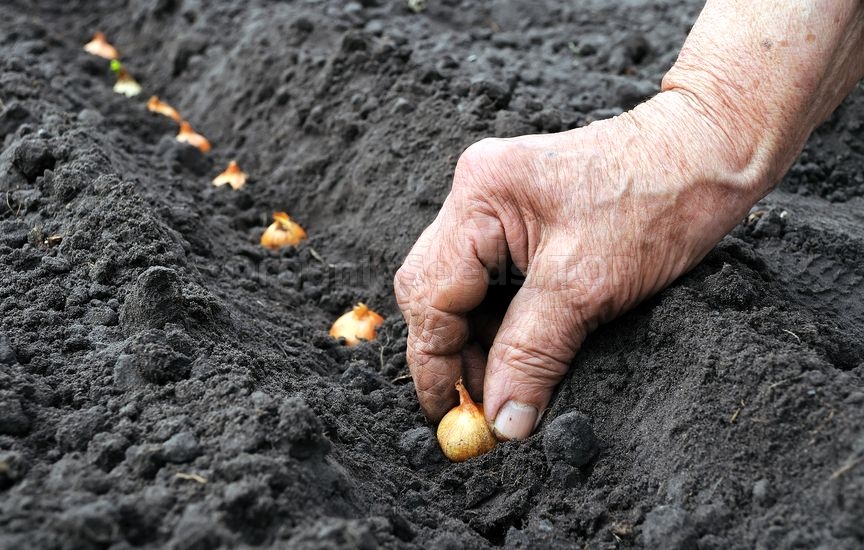 The common practice is to break or crush the onion stems if there are signs of flower heads. When the stems are dry, dig the bulbs, which can be left on top of the ground to cure and dry for several days.
Setting out onion plants that are too large, planting too early or using the wrong varieties usually causes onions to bolt or form undersize bulbs. The rest of the onion family; garlic, leeks, and shallots, should be planted in the fall if you're in the South and in late winter/early spring in the North. Gardeners in plant hardiness Zone 7 and further south will be mostly fall planters. From Zone 6 north check with the local Extension office for recommended planting times. Leeks, though not a traditional southern crop, are very easy to grow as a winter vegetable from the Gulf Coast, south. The same can be said for garlic. 'Early Italian' and 'Extra Select' are softneck varieties of garlic best adapted to most gardens in the U.S. In Zones 4 and above the hardneck garlics may be worth a try. Harmful Onion Plant Insects & Diseases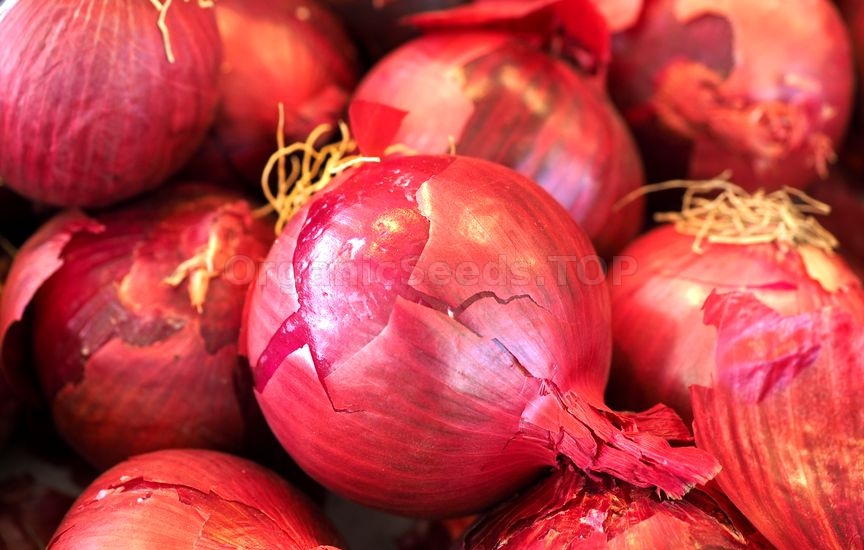 The onion family is usually rather pest free. Garlic is even suggested as a crop to repel insects although thrips love garlic. Thrips (minute insects with rasping mouthparts) attack all members of the onion family. At first their feeding gives the leaves a silvery look, and then the leaves may turn brown and die. If you wait too long, even chemical pesticides may not make much difference.
Cutworms sometimes take a few onions, but it's hardly worth spraying for them. If you use a biological worm spray (Bacillus thuringiensis) the caterpillars will still have done their damage before they get sick. Four-legged varmints are more devastating. Deer and rabbits will eat onions to the ground. Try Deer Off or Hot Pepper Wax to repel these pests. Bulb Rot and Pink Root can hurt your onion crops, but there is little practical treatment for the home gardener. Onion Plant Harvesting Tips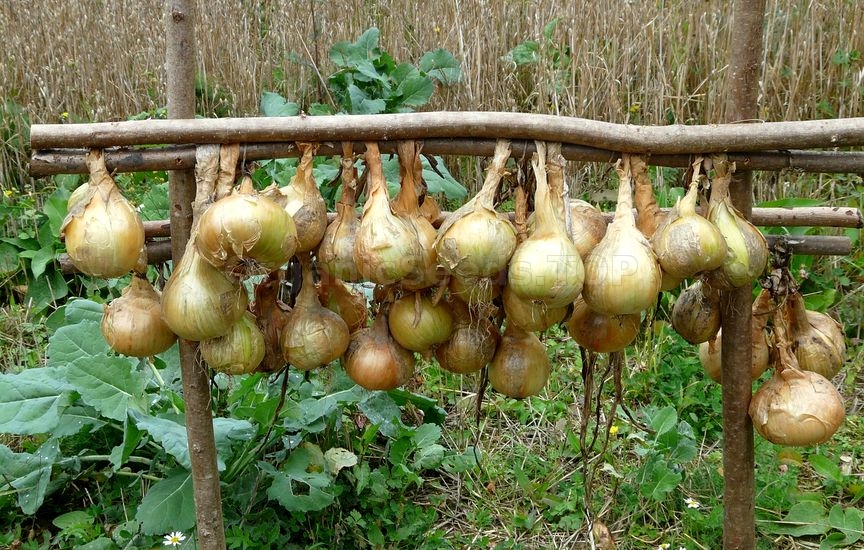 Members of the onion family generally give a very obvious signal when they are ready to harvest. The tops fall over and the tips of the leaves have started to turn brown. In addition, the bulbs or buds (in the case of garlic) are full size. Pull the onions, shake off any soil, but do not wash them or pull off any outside wrapper leaves. Store onions in a cool, dry, shaded area to cure for several days or up to 2 weeks if the weather is dry and not too hot. Then clip off the roots and tops leaving about one inch of the stem and brush off any remaining soil.
Store the onions in a very cool place (a basement or even an old refrigerator) trying to keep them between 35 and 55 degrees. The closer to 35 degrees the less chance the onions will sprout. Check your onions occasionally and use any showing signs of sprouting or softening right away. With good storage, your onion crop should last most of the winter. 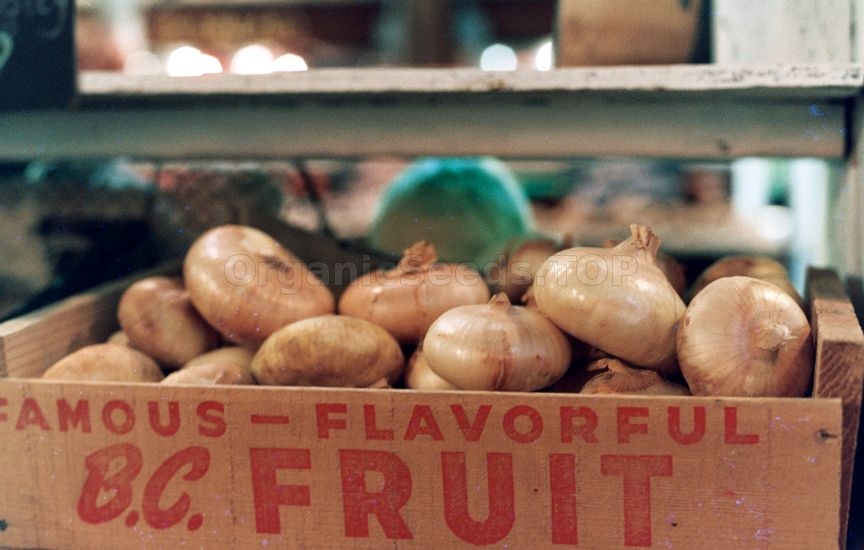 Short-day varieties, which tend to be milder and sweeter, don't store very well. If you need to keep these onions for more than a few months you might want to chop some up and freeze them for use in cooking. Multiplying onions and chives can be harvested a few at a time throughout the season. Just be sure to wait until the plant has grown sufficiently to recover, and don't pull up the entire clump. Chives are easiest to harvest with a sharp pair of scissors. Onion Recipes & Storage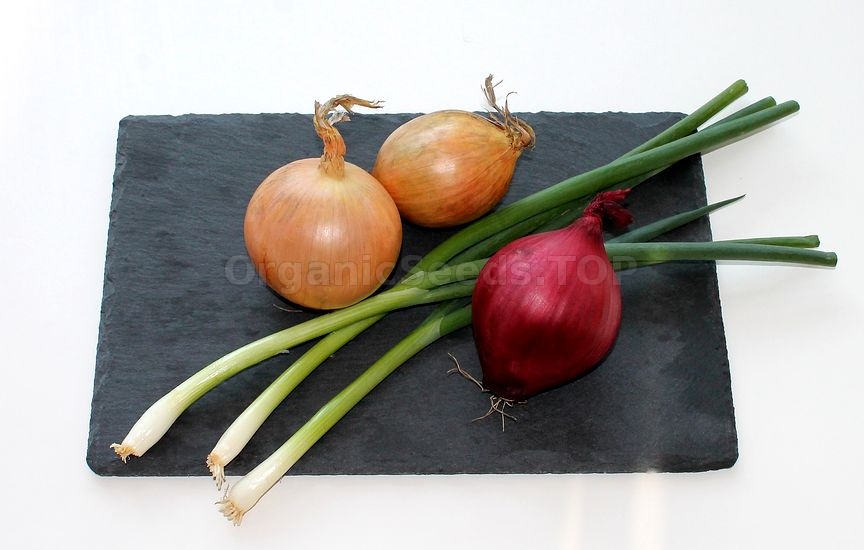
Onions are used in just about everything except ice cream. However, there's no more traditional use than in onion soup. Recipe Ingredients & Directions
Let the soup simmer for about an hour, then ladle into generous size, oven-safe bowls with a piece of garlic toast in the bottom. Finally add a slice of mozzarella or provolone cheese and put the bowls under the broiler to melt the cheese. Serve with a heaping platter of garlic toast and warn your guests about the hot bowls. You may need:«Galant» - Organic Onion Seeds«Golden Standard» - Organic Onion Seeds«Gold Princess» - Organic Onion Seeds«Donetsk Golden» - Organic Onion Seeds«Deep Purple» - Organic Onion Seeds |
|
|

